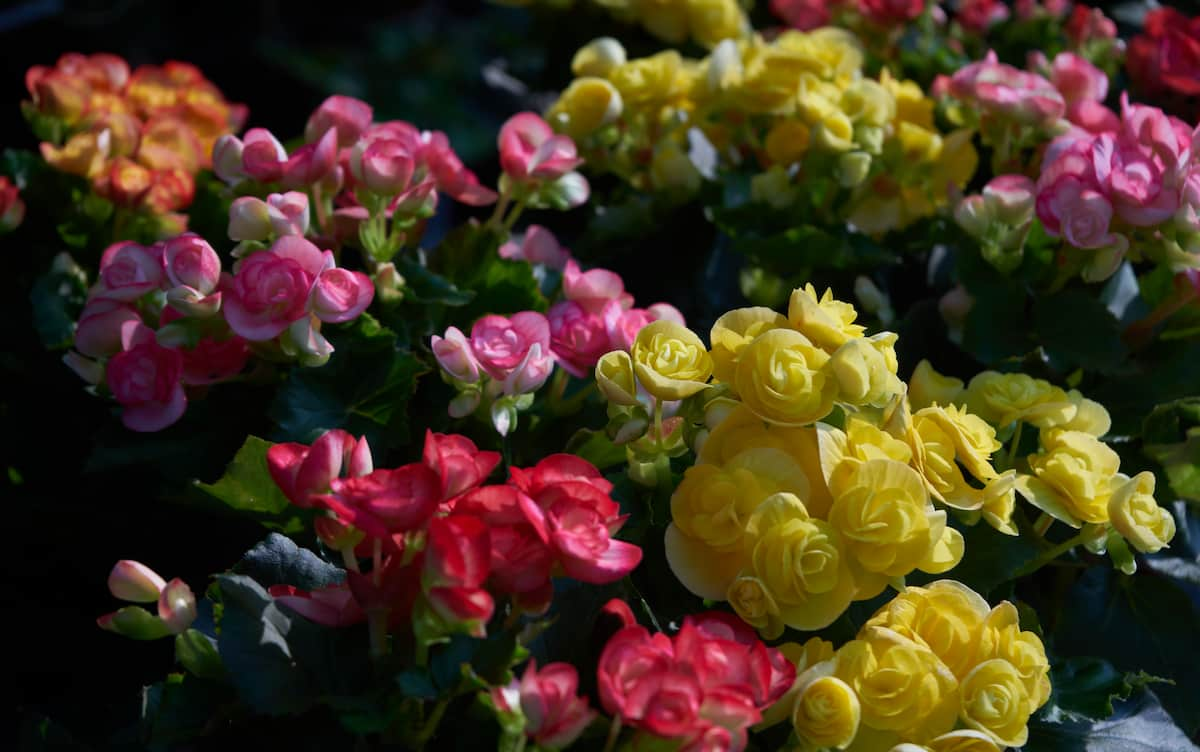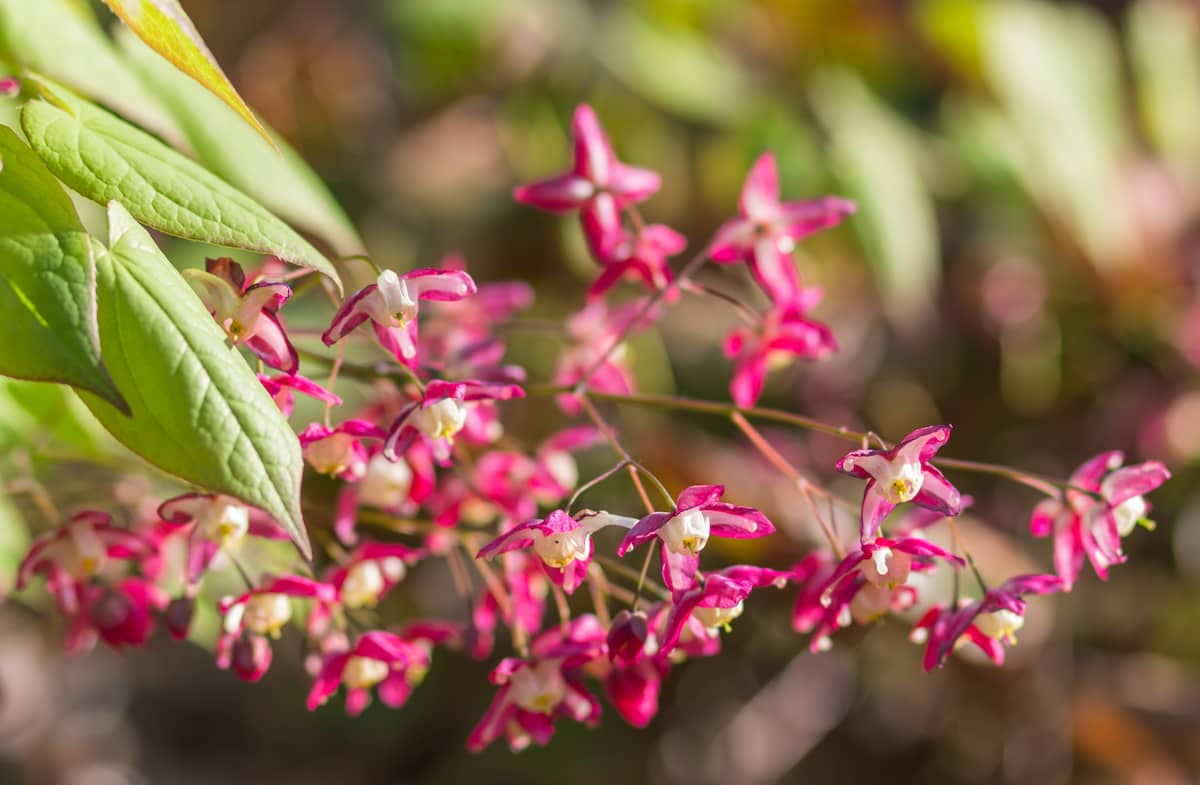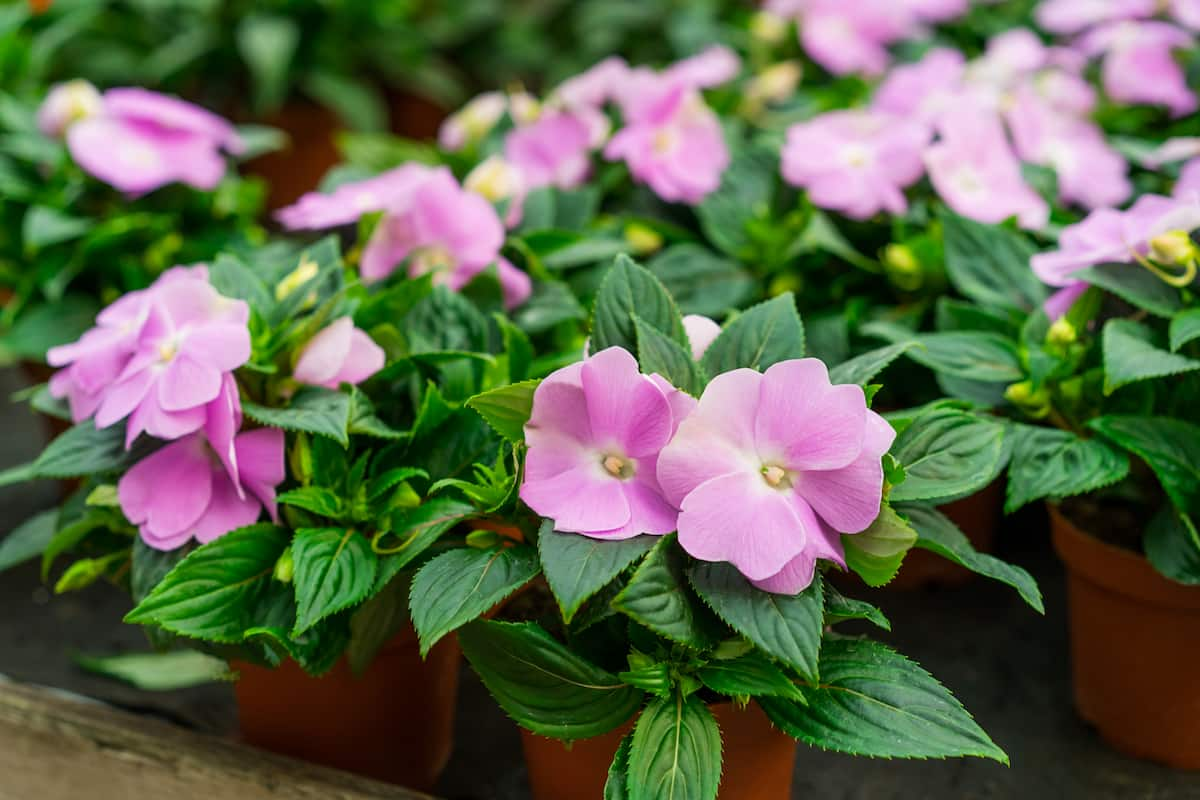Many gardeners use shady spots in their gardens for sheds, compost bins, or storage areas for garden furniture. The shady spots in your garden are often neglected, but when they are in the spotlight, or most of the garden is in the shade, you will have to get creative. We can bring dramatic and beautiful results to the shaded areas in our gardens if we choose the right shade plants.
Top 10 Easy Shade Gardening Plants and Ideas
Japanese Forest Grass
Among shade plants, Japanese forest grass is very popular. Adding ornamental grasses to a garden adds movement and structure, creating a well-rounded display. With its bright green/yellow blades, this grass forms attractive mounds. Most grass species prefer the full sun, but Japanese forest grass prefers shade. The plant prefers full shade whenever possible.
Begonia
The begonia thrives in a variety of conditions, including full shade. Their height and width can vary from 6 inches to 3 feet, depending on the variety. Some varieties are grown for their striking variegated foliage. Most of them are considered annuals.

Paper Plant
The paper plant shrub plays an important role in the landscape. Despite being tolerant of cold temperatures, they give a very tropical feel, love shade and give off a very tropical feel. Among plants, it is a good combination to find. It quickly fills shaded corners, under tree canopies, and in shaded side yards with luxurious glossy foliage.
Epimedium
It blooms from mid to late spring and grows from partial to full shade. Epimedium is also known as the bishop’s hat because of its unique flower shape. The height of this perennial can range from 8 to 12 inches, and the width can range from 12 to 36 inches. For shady areas, they are an excellent ground cover.
In case you missed it: Top 10 Tips to Protect Your Plants from High Heat: Terrace and Outdoor

Indian Pink
Shade gardens would benefit from the presence of this 1- to 2-foot-tall native. Hummingbirds flock to the trumpet-shaped red and yellow flowers produced by the drought-tolerant, clump-forming plants. By deadheading, you can extend the bloom time.
Hellebores
Growing hellebores, or winter roses in a shady spot to add color and interest, is beautiful. They also flower in winter, making them attractive to pollinators emerging from hibernation. It is recommended that hellebores be planted in full or partial shade and rich, well-drained soil. Hellebores can be propagated through division and are easy to grow, but they do not like to be moved once established, so dividing a root ball can be risky.
Bleeding Heart
Known as bleeding hearts, these charming perennials are a must-have in any shade garden. They can grow between 6 inches to 3 feet tall and 1 and 3 feet wide, depending on the variety.
Impatiens
A full-shade floral display can only be achieved with these annuals. Some types, however, are susceptible to powdery mildew, a devastating disease that kills the plants and overwinters in the soil. Consider new hybrids, such as the Beacon Series, that are disease-resistant if you’ve had problems. Their height ranges from 6 to 30 inches, and their width from 1 to 3 feet.
In case you missed it: How to Grow Plants From Cuttings: DYI Step-By-Step Guide

Foamflower
Foamflower, also known as tiarella, blooms with masses of frothy flowers in early spring. Especially in more southern zones, these delicate flowers will look their best in partial shade to full shade. A foot tall and a foot wide is about what they will reach.
Caladium
Caladium leaves are sometimes called elephant ears because of their impressive size. They fall under the same elephant ear family as colocasia but come in more vivid colors and patterns, adding real interest to any darker corner. Make sure to choose a variety that suits your space, as some varieties are wider than others.
Planning Your Shade Garden Tips and Ideas
To have a successful garden design, it is crucial to determine the type of shade by observing the space throughout the seasons. Shade is rarely constant and is a crucial aspect of every successful garden. There will also be variations in different parts of the garden. You may have a shade garden in
- Light shade: when it is open to the sky but with no direct sunlight.
- Semi-shade: where it receives three to six hours of direct sun in mid-summer.
- Dappled shade: with diffused light from deciduous trees
- Moderate shade: with two to three hours of midsummer sunlight
- Deep shade: under a dense evergreen tree canopy with less than two hours of sun
Check Your Soil Type in the Shaded Spots Prior to Choosing Plants
Many garden plants thrive in the shade, but each has its soil requirements. A soil’s acidity or alkalinity plays a part, but its ability to retain moisture or drain it is more important. Shade gardens usually have dry areas under large trees with shallow roots or against walls facing away from the wind and therefore protected from rain; this is particularly true if your soil is shallow, sandy, or chalky.
Ideas for Shade Garden
Colorful Foliage
Any landscape would be more colorful with flowers. However, plants with colorful leaves retain their color for longer periods. There are many plants with colorful foliage that you can use, such as Sacrococca, Heuchera, Allium, and Cotinus Royal Purple.
Keep the Theme Consistent
Your shade garden should follow the same design theme as the rest of your yard. Under your trees, do not build a Zen garden if the rest of your landscape is cottage-style. There will be a very strange look to it. Consider existing shadow patterns when designing your design. On the edges, you might be able to use plants that need more sunlight.
Use Design Elements to Create Unity
It would be best if you kept your palette small. A garden with too many elements can be confusing instead of restful since the eye doesn’t know where to focus. You can keep it simple by repeating shapes and forms, colors, and textures. In this way, the space is transformed into a garden rather than just a collection of plants, creating rhythm and continuity.
Grow fruit for foraging
You can also grow some fruits and vegetables in the shade, adding texture and flavor to your surroundings. Among the fruits, you can grow gooseberries, raspberries, rhubarb, redcurrants, etc. When you think about all the fruit you can find foraging, it is usually in the light shade of a woodland forest, so it will also thrive in partial shade gardens.
Add More than Plants
Adding features that enhance your plants also helps unify the garden. The container, the path, the water feature, or the bench can all be considered. Using wood chips or mulch as a path will give your garden a woodsy look if it’s under trees. Visitors can be invited to look and listen by placing stepping stones at intervals to slow their steps. There must be a path if there is one. It creates mystery and a desire to explore if you curve the path so that the end destination is just out of sight. At the end of the path is a bench where visitors can sit and relax.
Plant a Shade Vegetable Garden
It is fine to place part of a kitchen garden in the shade. Grow carrots, kale, mint, chard, beets, kohlrabi, spinach, peas, runner beans, and leafy salads in these garden beds. Start them off in a sunny place before transplanting them to a lightly shaded area to help their roots establish a better success rate if you’re growing them from seed.
Conclusion
Most plants thrive well in full or at least partial sunlight, so finding plants for shade can be challenging. The plants listed above make great perennials to plant in the shade. Depending on the conditions in your backyard and your taste, you’ll need to determine the best one. You can create a stunning display by combining some of these plants in a shady spot.
- Ultimate Guide to Ossabaw Island Hog: Breeding, Raising, Diet, and Care
- Ultimate Guide to Juliana Pig: Raising Facts, Size, Diet, Care, and Lifespan
- Raising Lleyn Sheep: Disadvantages, Price, Uses, Characteristics, and Care
- Ultimate Guide to Meishan Pig: Breed Facts, Breeding, Raising, and Care
- Ultimate Guide to Teacup Pigs: Raising, Diet, Lifespan, Cost, and Care
- Guide to Raising Poll Dorset Sheep: Facts, Profile, Characteristics, Uses, and Care
- Ultimate Guide to Bighorn Sheep: Characteristics, Diet, Lifespan, Breeding, and Lifecycle
- Ultimate Guide to Raising Katahdin Sheep: Farming Facts, Breed Profile, Uses, and Care
- Ultimate Guide to Raising Oreo Cows: Belted Galloways Farming Facts, Profile, Uses, and Care